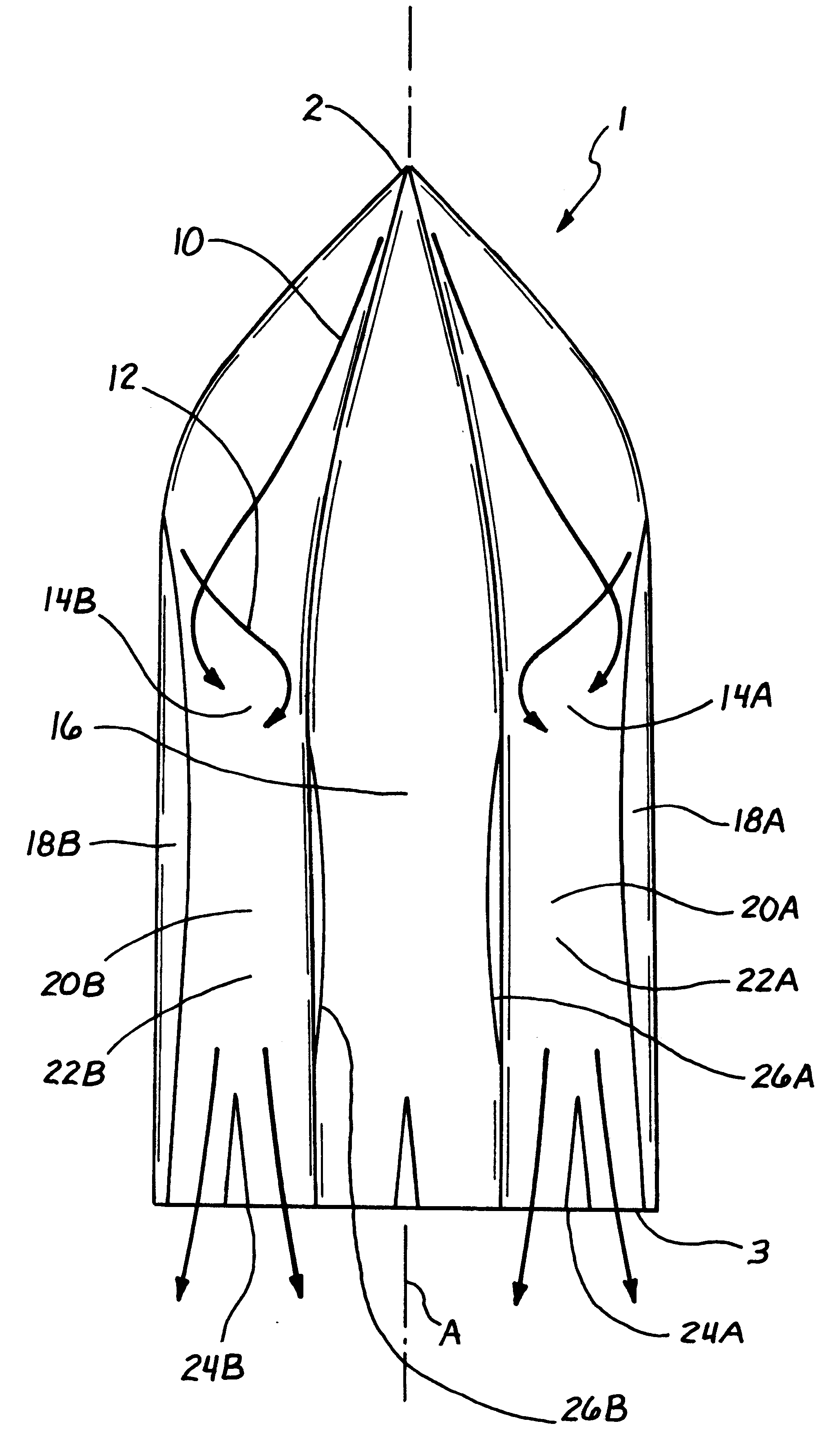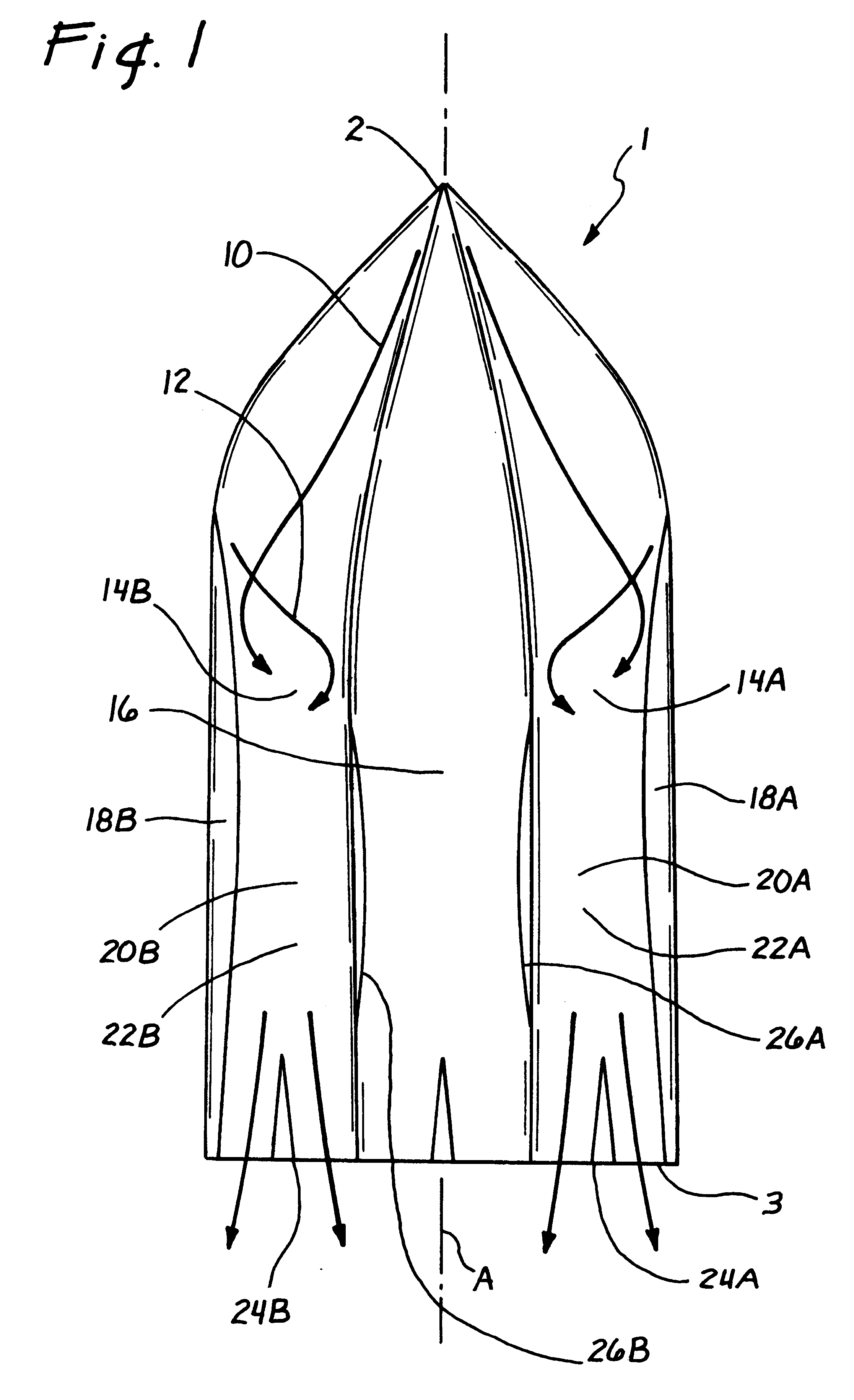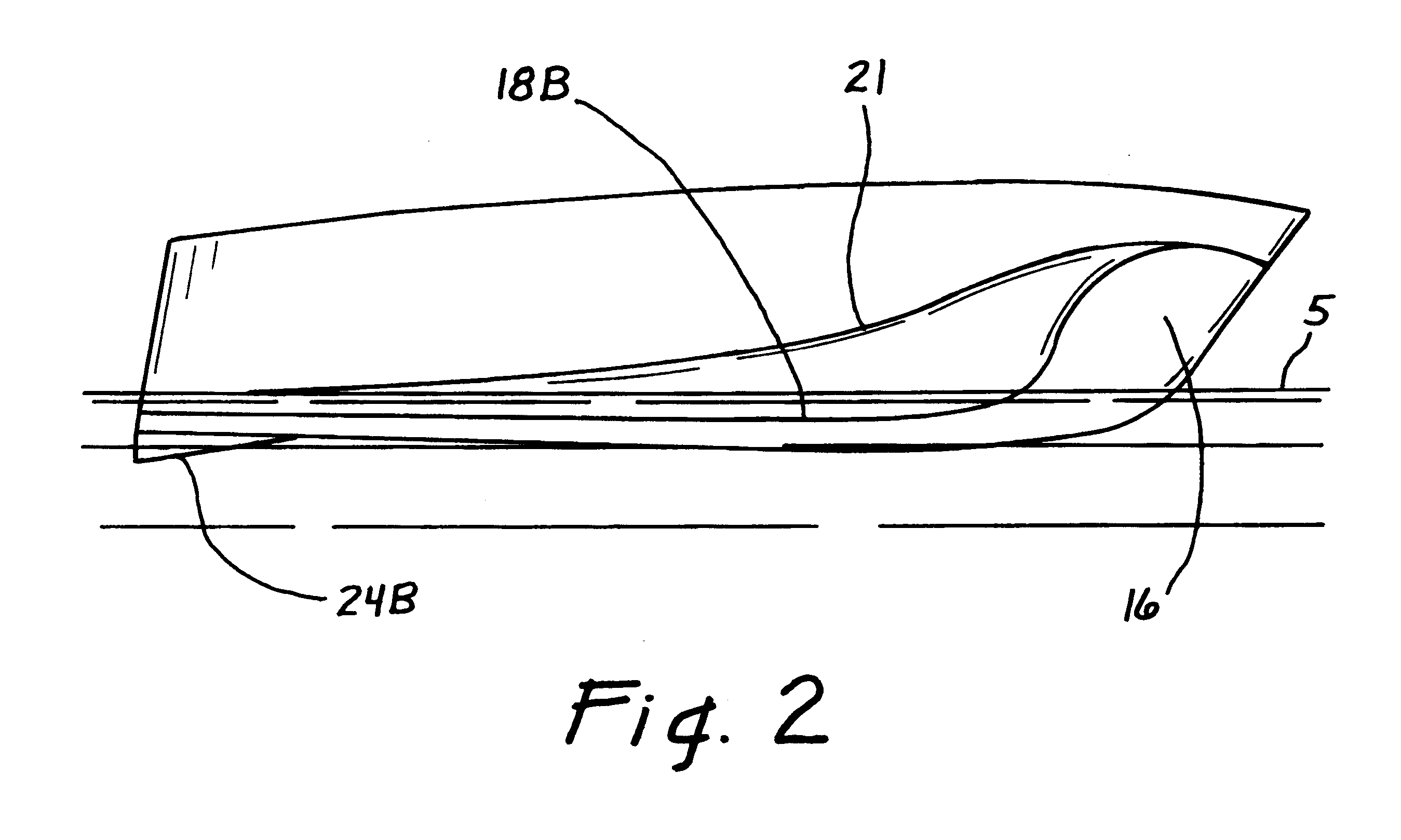M-shaped boat hull
a hull and hull technology, applied in the field of watercraft, can solve the problems of weak propeller wave action and noise pollution, damage to the foundations at the water/land interface, and the less effective rudder
- Summary
- Abstract
- Description
- Claims
- Application Information
AI Technical Summary
Benefits of technology
Problems solved by technology
Method used
Image
Examples
Embodiment Construction
The present invention is predicated on the realization that a boat propelled by motor or sail generates bow waves containing energy. With a conventional hull design, this energy is not only lost, thereby reducing efficiency, but also threatens other boats and damage to structures at the water / land interface. The "M-shaped" hull of the present invention recaptures the bow waves not only to protect other boats and structures at the water / land interface, but also to enhance boat efficiency. In the following detailed description, certain preferred embodiments of the present invention are described structurally first and then the general operation is provided.
Referring initially to FIGS. 1 and 2, the present invention provides a powerboat comprising an "M-shaped" hull 1 having a fore end 2, and aft end 3, and a longitudinal axis (designated by a reference number A in FIG. 1) extending between the fore end 2 and the aft end 3. The hull 1 includes a displacement body 16, which is preferabl...
PUM
 Login to View More
Login to View More Abstract
Description
Claims
Application Information
 Login to View More
Login to View More - R&D
- Intellectual Property
- Life Sciences
- Materials
- Tech Scout
- Unparalleled Data Quality
- Higher Quality Content
- 60% Fewer Hallucinations
Browse by: Latest US Patents, China's latest patents, Technical Efficacy Thesaurus, Application Domain, Technology Topic, Popular Technical Reports.
© 2025 PatSnap. All rights reserved.Legal|Privacy policy|Modern Slavery Act Transparency Statement|Sitemap|About US| Contact US: help@patsnap.com



